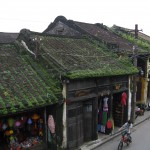
You expect to step back in time when you visit the ancient port city of Hoi An in central Vietnam, and with the right perspective that’s what happens to you. Here, for thousands of years, traders from the inland of Indochina, or southeast Asia, met with traders from Chinese and Japanese as they crossed the region, then later the Dutch and Portuguese on their world travels. The central location on the South China Sea, together with the natural port and the fresh water source from inland, made this an ideal spot for the purpose. As a result, spices and ceramics, among other goods, moved through here and then everywhere else: Europe, India, China, north Africa and Japan.

All those vessels and sailors came here peacefully with one purpose in mind, to trade and gain wealth. And that makes this town more than charming, but a symbol of possibility for the peoples of the world today, and one particularly deserving of its designation as a UNESCO World Heritage Site. For its past and present demonstrate how diverse peoples can come together for business and trading, rather than fight among themselves and turn to war.
Because the city bridged these and so many other peoples over time, its own symbol, appropriately, comes from a link between cultures. It’s what they call the Japanese bridge, a covered wooden bridge and Buddhist pagoda dating from the 16th century, and a connection then between the Japanese part of town and the Chinese part.

So it seems fitting that the town has survived all those changes of regime within the country and all its wars. In the first millennium, the Cham tribe ruled, then the Vietnamese and the Chinese and the French – all benefitted from the port’s commerce. By mid-19th century, the port’s importance waned in favor of nearby Da Nang. No longer significant for its port, and an outlier off the major roads, Hoi An was not worth any fighting or bombing. So it survived pretty much intact from the mid-19th century. Only within the last few decades of peace have tourists been able to visit the area, and their money has revived the old trading culture as well as helped restore the buildings.
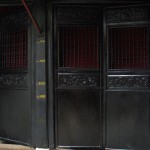
Many of the most interesting buildings are the extraordinarily well-preserved, two level homes of wealthy Chinese traders from the 19th century. Each of their dimly lit interiors is paneled from top to bottom with dark lacquered woods. Rich dark wood furnishings still survive in the old shop front area that welcomed customers along the riverway and the large main room which offered communal space for even the present and the past to meet: The family would gather in this room and also connect with its ancestors via shrines honoring the dead. Nearby, a host of highly decorated Chinese temples and community halls also remain for their descendants to gather and pray.
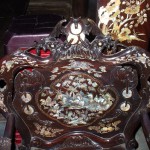
That’s why, walking into these old homes and past all the other faded buildings with ceramic tiled roofs and yellow painted stucco, you feel you’ve stepped back in time. You certainly see that past. And, though the constant calls to buy may jangle a western ear, you also can feel the old raison-d’etre of the place, the call for different cultures to gather and trade peacefully.

Now, easterners and westerners come here to soak up the ancient charm of Hoi An, as well as the sunshine on the glorious white sand beaches a few miles away. (We’re here at the wrong time to enjoy sun and surf because it’s the best time to visit the other countries on our trip.) Today’s Chinese and Vietnamese work their shops along the streets of the old quarter, vociferously beckoning those tourists to enter and purchase textiles, art works and souvenirs of all sorts or try their restaurant. The goods and the wall paint are newer but, in this sense, not much really has changed.
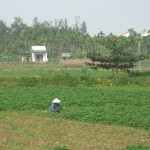
Meanwhile, just outside the city, where the rivers join and spread before reaching the sea, local tribes continue to farm and fish as they have for centuries, producing rice, vegetables and even shrimp in the well-watered lowlands here. The flocks of white geese still wade to and fro. The water buffalos grumble as you go by. Village dogs confirm you’re there in peace.
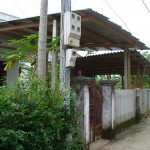
Moreover, wandering off the main roads into the villages – or bicycling like a villager as we did – reveals a growing prosperity, as sizable two story homes have replaced rustic original ones, making the villages look more like a western suburb with Asian styling.
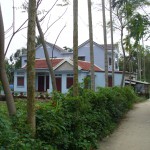
Perhaps it’s the value of the crops that has grown, but more likely it’s the ancient source of wealth still that has made the most difference – connecting cultures and trade.
(To see more pictures from Vietnam, CLICK HERE to view the slideshow at the end of the Vietnam itinerary page.)


I like these photos a lot, esp the flowers on the rooftop